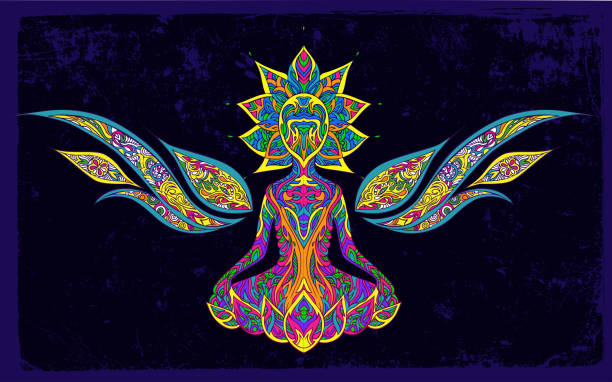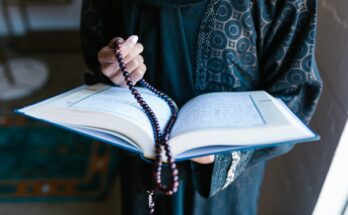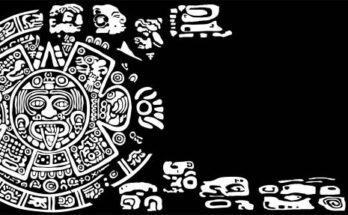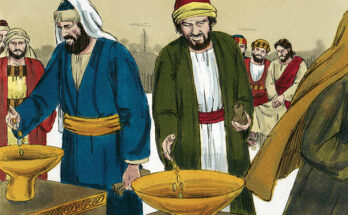Magic and illusions have captivated the human imagination for centuries, transcending cultural boundaries and weaving through the fabric of human history. While these art forms are often associated with entertainment and wonderment, their connection with religion adds an intriguing layer to their significance. In various religious traditions, magic and illusions have played multifaceted roles, ranging from conveying spiritual messages to enhancing the mystical experience of believers. This article explores the enthralling interplay between magic, illusions, and religion, unravelling the threads that bind these seemingly disparate realms.
Magic as a Tool for Divine Communication
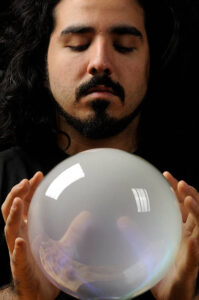 (Photo from iStock)
(Photo from iStock)
Across diverse religious traditions, magic has been employed as a means of facilitating communication between the divine and the mortal. In ancient civilizations, priests and shamans often utilized magical rituals and illusions to commune with gods, interpret omens, and seek guidance for their communities. The Oracle of Delphi in ancient Greece, for instance, was renowned for her prophetic visions induced by a combination of hallucinogenic gases and theatrical performances, creating an illusion of divine insight.
In the Judeo-Christian tradition, the biblical narrative is replete with instances of miracles that can be perceived as magical events. Moses parting the Red Sea, turning a staff into a serpent, or Jesus walking on water—all these episodes involve elements of the miraculous, akin to the illusions performed by magicians. These acts serve not only as demonstrations of divine power but also as instruments of conveying profound spiritual messages to the faithful.
Illusions in Religious Symbolism
Illusions, with their ability to create visually stunning and emotionally evocative experiences, often find a natural home in religious symbolism. Places of worship, from ancient temples to modern churches, are adorned with intricate artworks and architectural designs that utilize illusions to convey deeper spiritual meanings.
In Hinduism, the intricate carvings on temple walls often depict mythological stories and divine narratives. These sculptures, through their craftsmanship and optical illusions, aim to transport the observer into the realm of the sacred. Similarly, Gothic cathedrals in Christianity employ architectural illusions such as soaring arches and elaborate stained glass windows to create an otherworldly atmosphere, inviting worshippers to transcend the mundane and connect with the divine.
Magic in Rituals and Ceremonies
Rituals and ceremonies are integral components of religious practices, providing a structured framework for believers to express their devotion and connect with the divine. Magic and illusions often play a role in enhancing the theatricality of these rituals, fostering a sense of awe and reverence among participants.
Masked performances and trance-inducing movements contribute to the illusion of direct communion with ancestral spirits. Similarly, in the mystical traditions of Sufism within Islam, whirling dervishes engage in mesmerizing spinning dances as a form of worship, transcending the boundaries of the material world through rhythmic movements and spiritual ecstasy.
Magic as a Pedagogical Tool
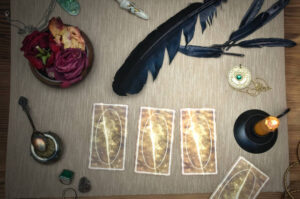 (Photo from iStock)
(Photo from iStock)
Magic and illusions, with their ability to engage and entertain, serve as powerful pedagogical tools within religious contexts.
In Buddhism, the Jataka tales recount the previous lives of the Buddha through vivid narratives that often include magical elements. These stories, filled with talking animals, miraculous events, and moral lessons, provide a relatable and engaging way to impart the teachings of compassion, wisdom, and ethical conduct.
Contemporary Religious Movements and Magic
It continues to evolve within contemporary religious movements. New religious movements and charismatic leaders often incorporate magical elements. To create a sense of authenticity and mystique around their teachings.
In modern Christian Pentecostalism, the practice of faith healing. And speaking in tongues is often accompanied by a theatrical display of spiritual power. The laying on of hands to heal the sick or the manifestation of speaking in unintelligible languages. Creates an illusion of a direct connection with the divine. Similarly, in new age spiritual movements, leaders may incorporate magical rituals. Crystal energy, or aura readings to enhance the mystical experience of their followers.
Critiques and Controversies
While the integration of magic and illusions into religious practices has enriched spiritual experiences for many. It has also sparked debates and controversies within religious communities. Sceptics argue that the use of magical elements can undermine the authenticity of religious teachings. Blurring the line between genuine spiritual experiences and theatrical performances.
In some cases, charismatic leaders accused of using magical tricks. To manipulate their followers have faced backlash within their religious communities. The tension between scepticism and faith, rationality and mysticism. Continues to shape the discourse surrounding the role of magic in religion.
Conclusion
The entwined history of magic, illusions, and religion reveals a fascinating tapestry of human imagination, creativity, and spiritual exploration. From the ancient rituals of divination to the contemporary charismatic movements. Eventually, the interplay between magical elements and religious practices remains a dynamic and evolving phenomenon.
Magic and illusions, whether perceived as divine manifestations or human artistry. Have served as bridges between the tangible and the transcendent. The ordinary and the extraordinary. As humanity continues its quest for meaning and connection with the divine. The mysterious dance between magic and religion is likely to persist. Inviting believers to explore the realms of wonder and awe on their spiritual journeys.
Whether through ancient rituals, symbolic illusions, or contemporary charismatic expressions. Evidently, the fusion of magic and spirituality continues to captivate hearts, fostering a profound sense of wonder and reverence.
Furthermore, the symbiosis of magic and religion underscores the human thirst for a deeper understanding of the ineffable. The interplay serves not only as a conduit for divine communication. But, also as a testament to the adaptability of religious expression across cultures and epochs. While controversies persist, the enchanting allure of magical elements in religious practices endures. Challenging believers to navigate the thin veil between scepticism and faith. As humanity grapples with the mysteries of existence, the enduring presence of magic in religious contexts beckons us to explore the mystical, fostering a timeless dialogue between the tangible and the transcendent in the ever-evolving tapestry of spirituality.

